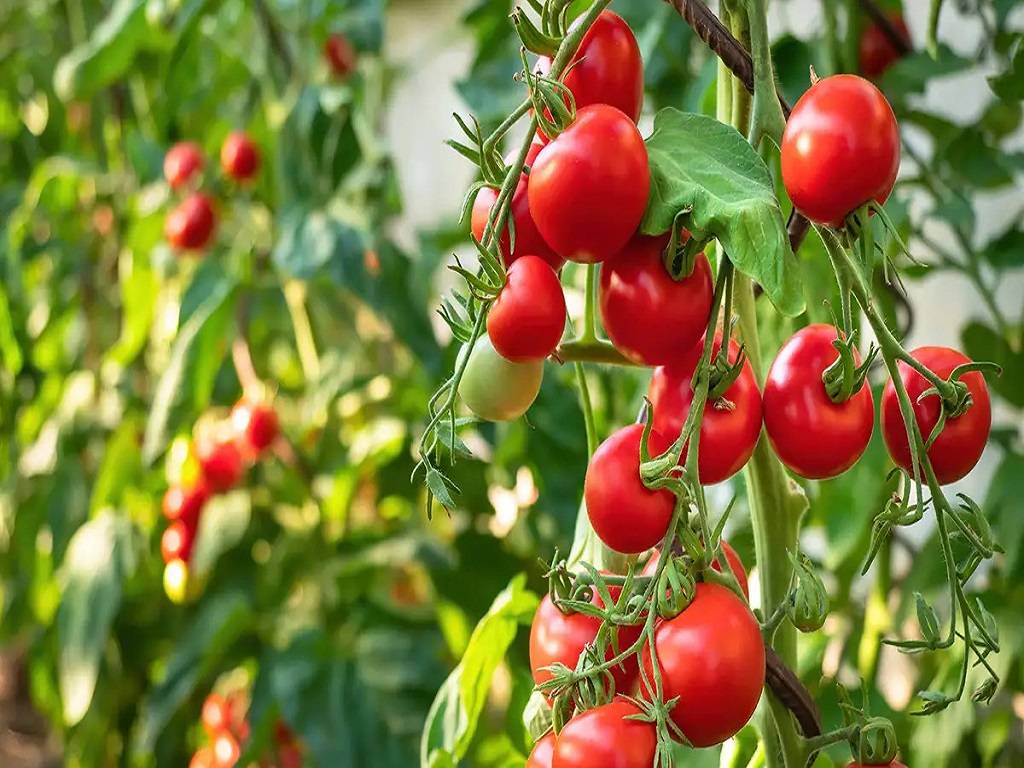
The crown gem of many vegetable gardens is a red, juicy homegrown tomato. Growing tomatoes is often the impetus for starting a vegetable garden and every tomato lover dreams of growing the ultimate tomato: firm but juicy, sweet but tangy, aromatic, and blemish-free.
Unfortunately, few vegetables are prone to more problems than tomatoes. The trick to growing great-tasting tomatoes is to choose the best varieties, start the plants off right, and control problems before they happen.
Start here with some time-tested tomato growing tips to ensure your tomato bragging rights this year.
Planting Tomato Seeds
Give seedlings plenty of space to spread out if you're beginning tomatoes from seed. Limiting the seedlings to one plant per cell or small pot is necessary. Snip the smaller, weaker seedlings to make room for the strongest. Their growth is stifled by overcrowding, which causes stress and eventually sickness. After they get their first set of true leaves, transplant tomato seedlings into their 4-inch pots.
Providing Adequate Sunlight to the Plant
Tomato seedlings require bright, direct light to grow. Since the days are short in the winter, even placing them near a bright window may not be enough to supply them with enough natural light. Unless you're growing them in a greenhouse, the best option is to provide 14 to 18 hours of artificial plant lighting per day.
Keep immature tomato plants only a few inches from fluorescent grow lights to maintain stocky, not spindly, growth. When you're ready to plant them outside, locate them in the sunniest area of your vegetable garden.
Mulching
Mulching saves water and keeps soil and soil-borne diseases from spreading up on the plants, but if you put it down too soon, it will shade and cool the soil. Allow the sun to warm the soil in the spring since tomatoes enjoy the heat. You can add a layer of mulch to keep it moist if temperatures are warm both throughout the day and at night.
Pruning
Suckers that form in the crotch joint of two branches should be pinched and removed. They will not produce fruit and will deplete the energy of the remainder of the plant. Pruning the rest of the plant, on the other hand, should be done with caution. You can remove a few leaves to permit the sun to contact the ripening fruit, but it is the leaves that photosynthesize and provide the sugars that give your tomatoes flavor. There will be fewer tasty tomatoes if there are fewer leaves.
Watering
While the fruits are maturing, water deeply and frequently. Irregular watering, such as skipping a week and attempting to make up for it, causes blossom end rot (calcium deficiency) as well as cracking and splitting. The general rule is that your plants should receive at least 1 inch of water every week, although they may require more during hot, dry conditions. Give your plants water if they've been wilted for the majority of the day.
You can reduce the amount of watering after the fruit begins to ripen. Less water will encourage the plant to concentrate its sugars, which will result in a greater flavor. Make an informed decision. Don't deprive the plants of water to the point where they wilt and become stressed, or they'll lose their flowers and possibly die.
















